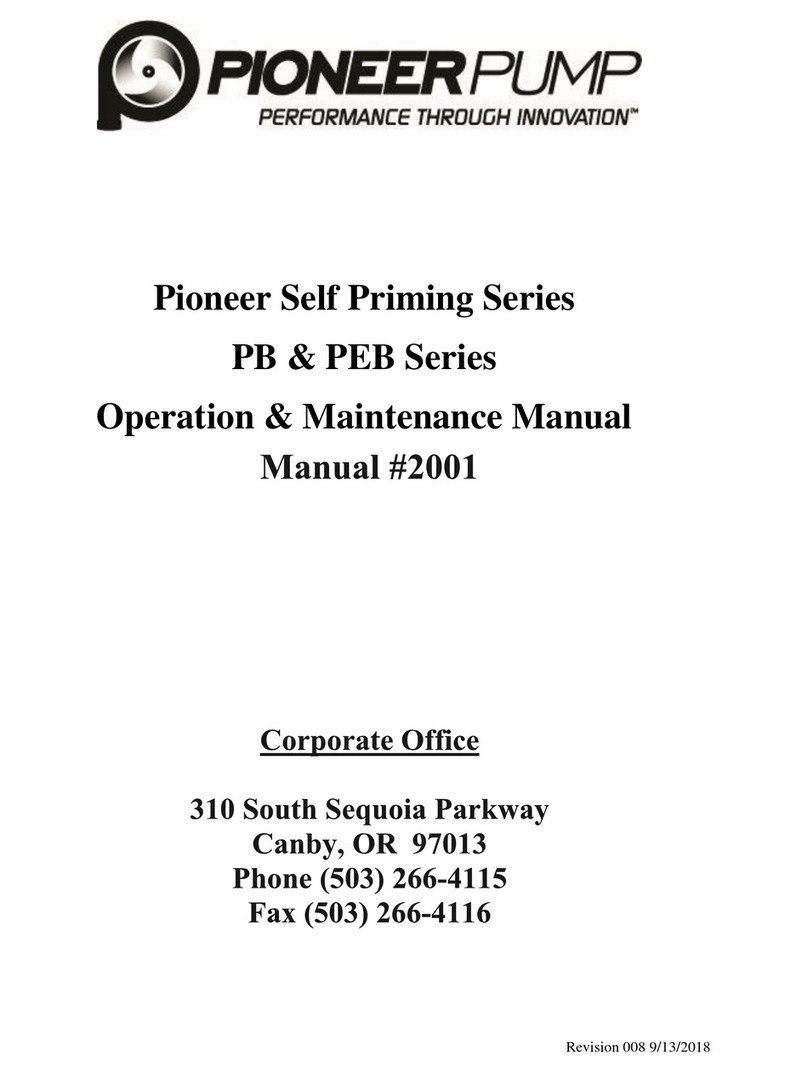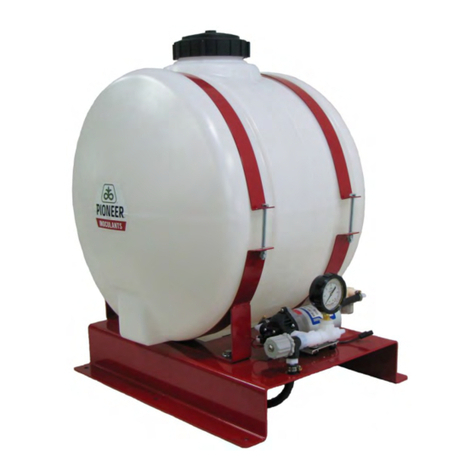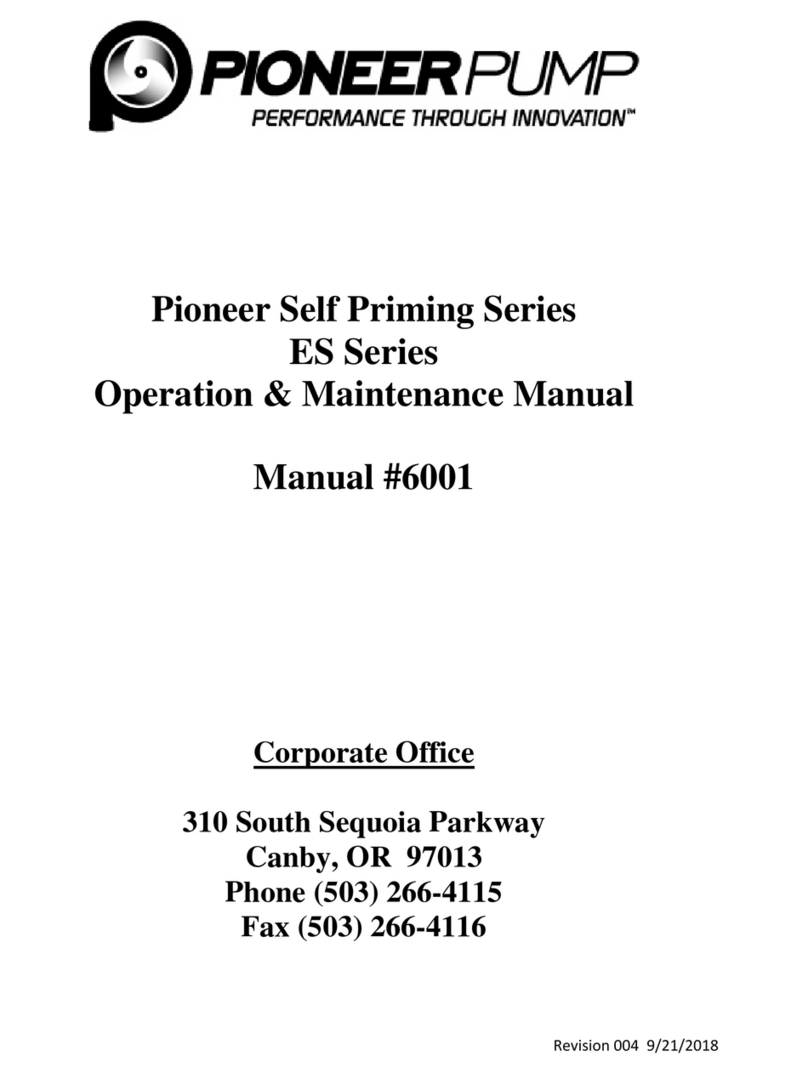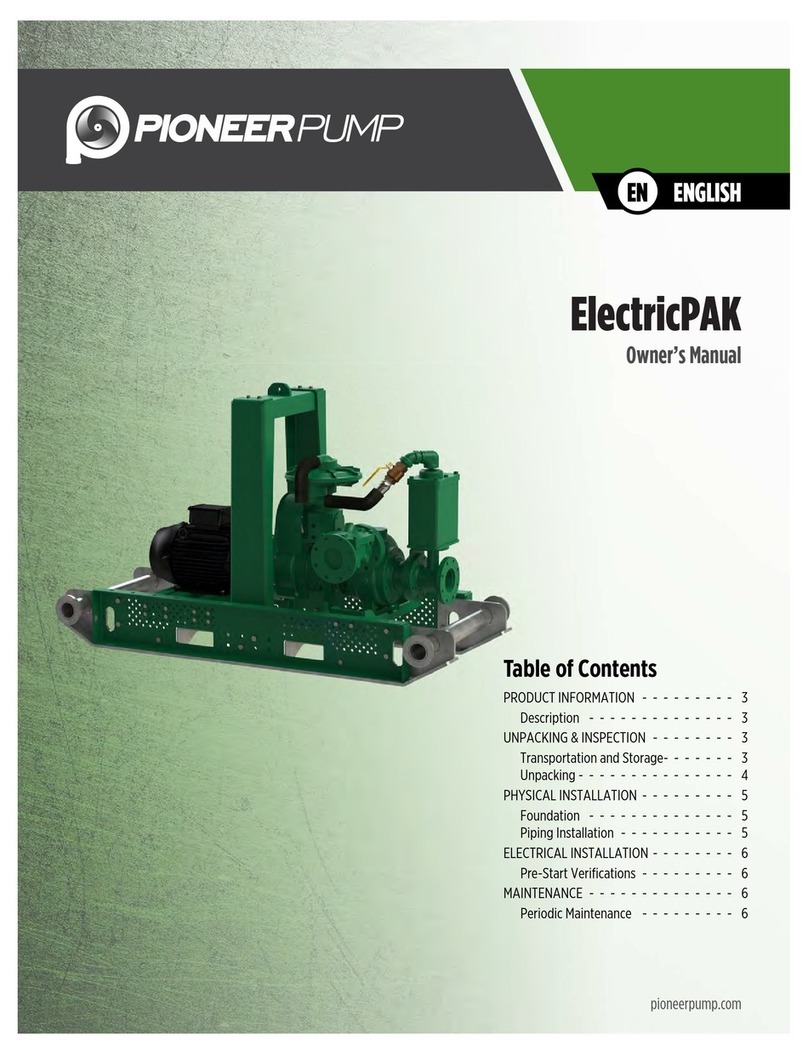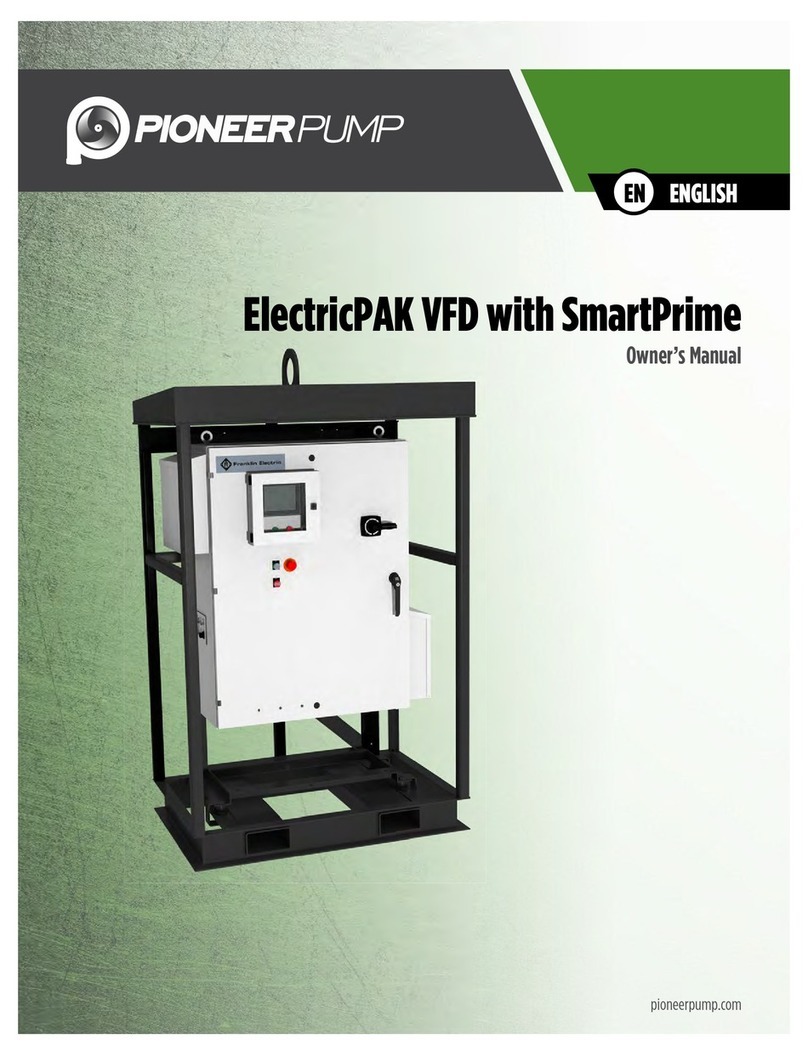
SCREENING
Make provisions for the installation of a suction screen or strainer to prevent any debris from
clogging the impeller. The open area of the strainer should be equal to at least four (4) times the
area of the pipe. The screen should be rigid enough to prevent collapse when flow is reduced due to
clogging.
SUMP DESIGN
The submergence of the suction pipe into the liquid should be at least four (4) to five (5) times the
pipe diameter. If this is not possible then provide a baffle or a floating board. This is to prevent any
vortex action allowing air into the pipe. For best performance a bell mouth fitting is recommended.
Refer to the Hydraulic Institute Handbooks or other Hydraulic Data books for detailed sump design
information.
LIFTING
Any lifting equipment is to be rated for at least five (5) times the weight of the item being lifted.
Use only established methods when lifting or moving any heavy components.
ALIGNMENT OF PUMP AND MOTOR
Precise alignment is mandatory to achieve correct performance of the system. Every time a
component is moved this alignment will have to be checked. The alignment can be checked with a
straight edge and an outside caliper, taper thickness gauge, dial indicators, or for best results, use a
laser alignment tool. Use the straight edge across the outside diameters of the coupling to ensure
that the two halves are concentric and parallel. The outside calipers or the taper thickness gauge is
to correct for any angular misalignment and to verify the correct gap between the coupling flanges.
Use a laser alignment tool or dial indicators to adjust for concentric and angular displacement. With
dial indicators, rotate shafts together and take readings every ninety (90) degrees. Make adjustments
by placing shims under the driver, and be sure that the mounting bolts are properly tightened while
taking readings and after final adjustment then install coupling guard.
ROTATION
CAUTION!!
When connecting a pump to an electric motor, it is common practice to “bump” the motor starter to
check for correct rotation. It is imperative that the PT pump inspection cover be removed prior
to this rotation check! The PT series pumps use threaded shafts and impellers; if the motor is
“bumped” and rotation is backward, the impeller will unscrew and be forced against the wear plate.
This will often apply enough force to the wear plate / inspection cover assembly to break the
inspection cover clamp.
If, after removing the inspection cover and “bumping” the starter, it is found that the rotation is
backward, then shut down and lock out the power to the pump and correct the wiring connection
(reverse two leads for a three phase motor). Before reconnecting the power to the motor, retighten
the impeller per instructions under the SEAL INSTALLATION section.
9


















